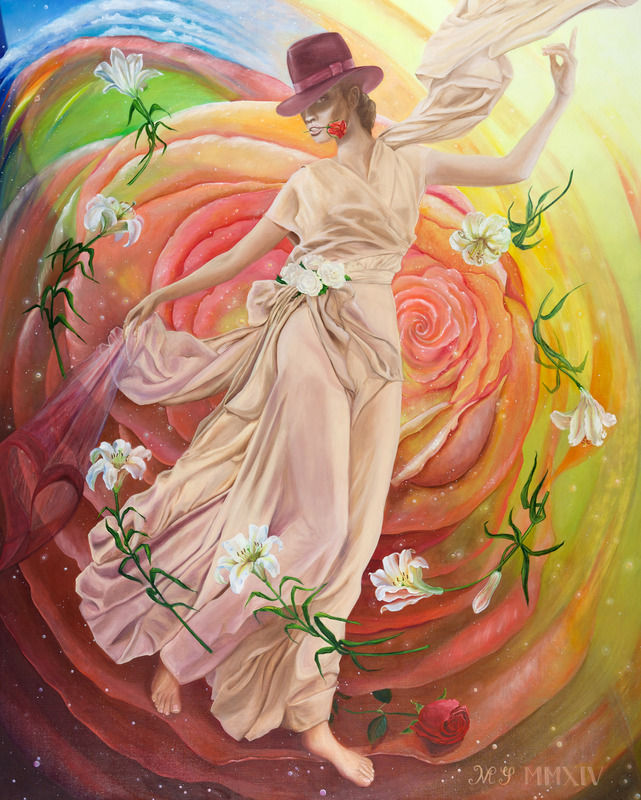DANSE MACABRE
La Camorra. Libertango
A. Schnittke. Tango in a madhous
Enrique Miguel Gallo. Mi Gaucha (Milonga Sureñа)
W. A. Mozart. Requiem (Lacrimosa. Karl Böhm. Sinfónica de Viena)
A. Piazzolla. Vuelvo Al Sur (Koop Remix)
Aroma for the painting:
Demeter. Petrichor
Technique: oil on canvas Dimensions: 171 х 220 cm
Style: Positive Synergism
Danse macabre is a popular iconographic narrative in the late-medieval European art, depicted as a dance of human skeletons rhythmically moving to music with the late lamented, which refers to the fragility of their lives and how vain were the glories of earthly life… With this inferno dance starts the afterworld ordeal of the sinners’ souls “on the deathly plain of the infinite mass“… However, during the past five hundred years, the picture of the world and the worldview have considerably changed, and such understanding has gone by in time and does no longer exist!
In this painting everything is significant and has a meaning: the color, the light, the number, configuration, and location... For example, we know that "2" is inverted "5"... And "?" - in the inverted form (like in the picture the one made of lilies) means "the answer"... "." - Do you see the planet? It might, probably, mean "of a planetary significance"... An amusing puzzle, isn't it?! 1, 2, 3, 4, 8, 9 - they are magic numbers and symbols... A stern look... No fun?! - Of course, joking aside... It's serious! Bare feet... Before Death we all stand naked and exposed! But maybe there is an added meaning... If we do not "fall from grace", we pass away quietly and relaxed in the sleep "like saints, after washing feet in the evening"... The rose petals are like lips open for a kiss... Yes, Death is a kiss of Eternity! And, by the way, people in the know say that for the soul the experience of death is less painful than the experience of birth... And on the left, do you see, the ends of the stole are forming a heart..? Anyone can understand the symbol! But further on, The Thoughtful, Sensitive, Perceptive and Discerning Reader, please, continue yourself..!
But the most important thing is, perhaps, the understanding that we are so much loved... and that.., as everything in this world is for our good, so is the death.., thanks to which we are allowed to dump our old, shabby and worn out on the potholes of life, duds... to get new, impeccably made, outfits to match our psychological age and spiritual growth!
But if everything is completely different?! - In this regard... it seems appropriate to remember an old anecdote (which, probably, cropped up from a parable on the same topic) about two embryos having a conversation in their mother's womb concerning the essence of existence. The younger brother asks his older, more experienced and wise, brother a question, "Is there life after death?" - And the older brother answers, "I don't know... No one went and came back from there..."
IN HEAVEN DWELL OUR KINDRED SOULS
L Abbasova
In heaven dwell our kindred souls,
They send us warmth from skies above,
As shining stars, they start to glow,
We miss them often, hearts in pain, |
Pictures of the paintings: Sergrei Didyk
 Sound track for the painting:
Sound track for the painting: